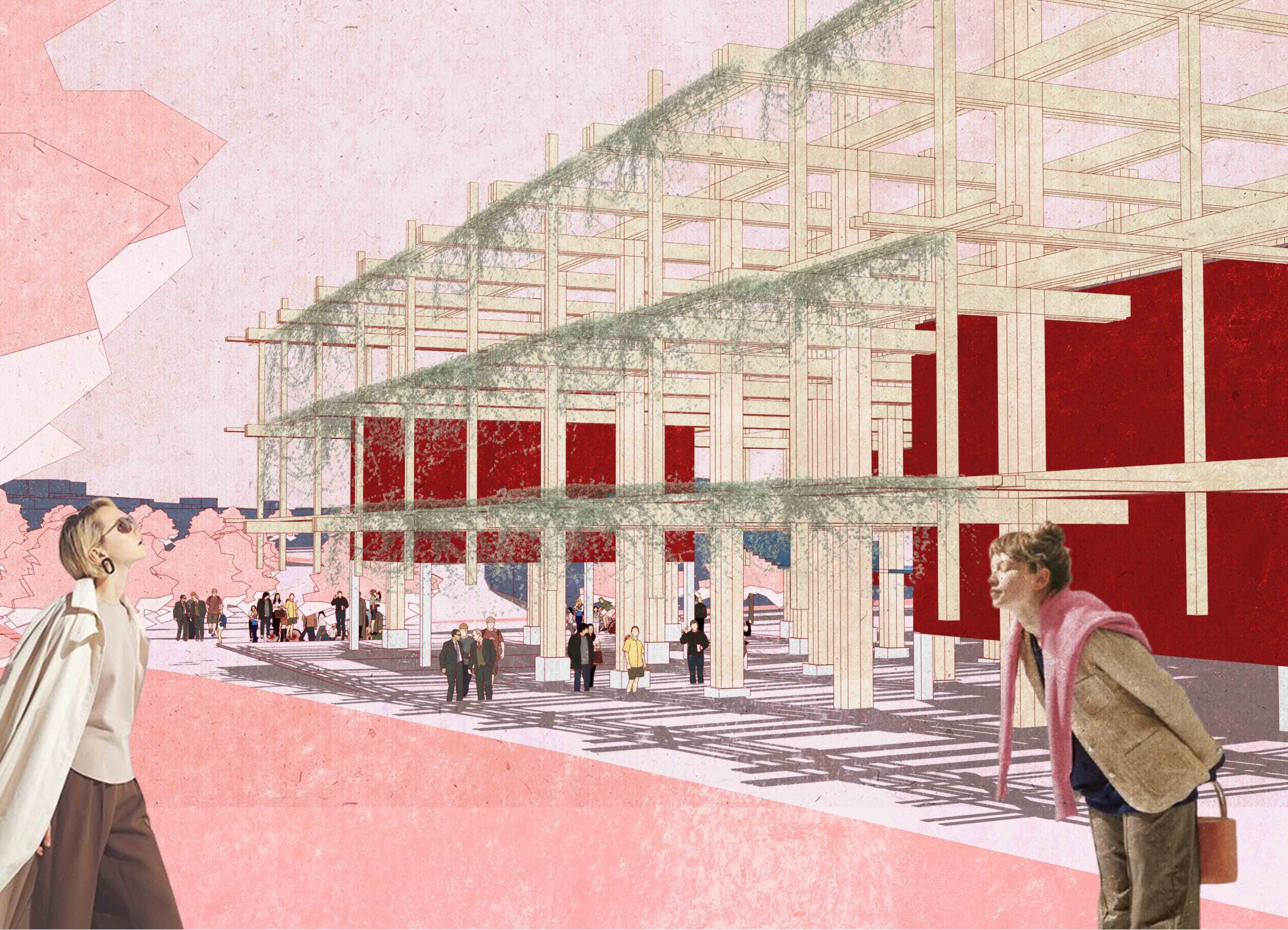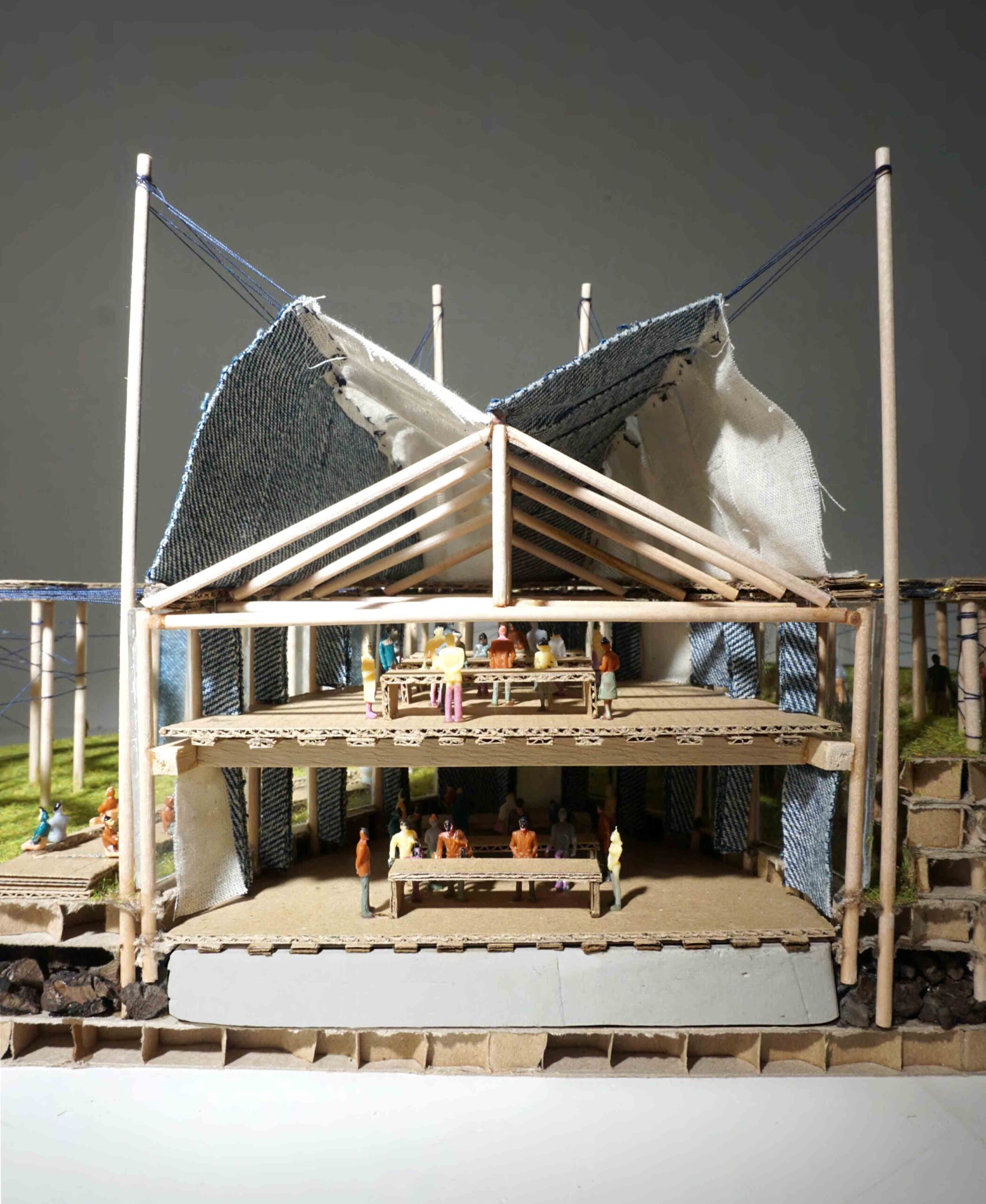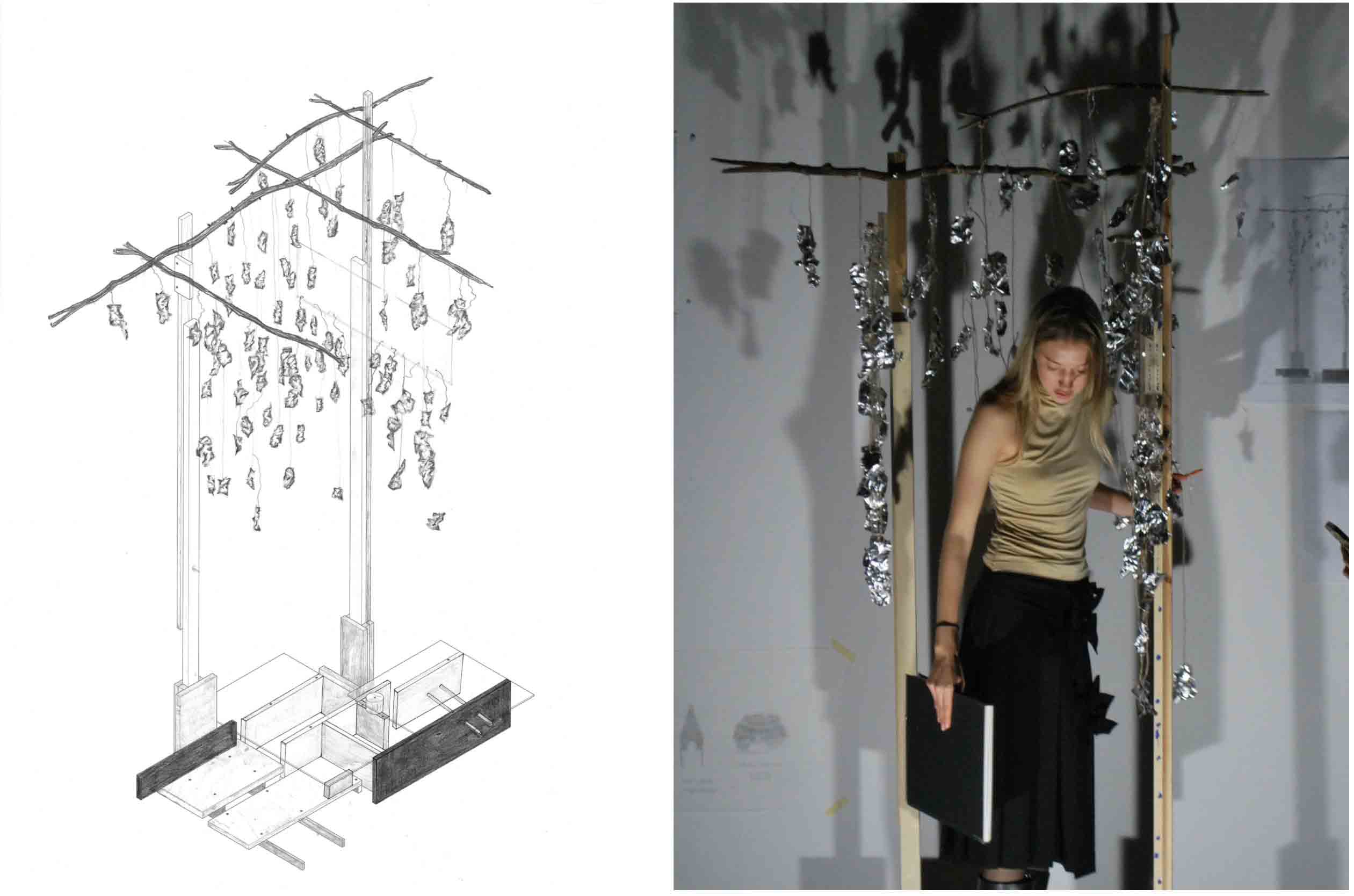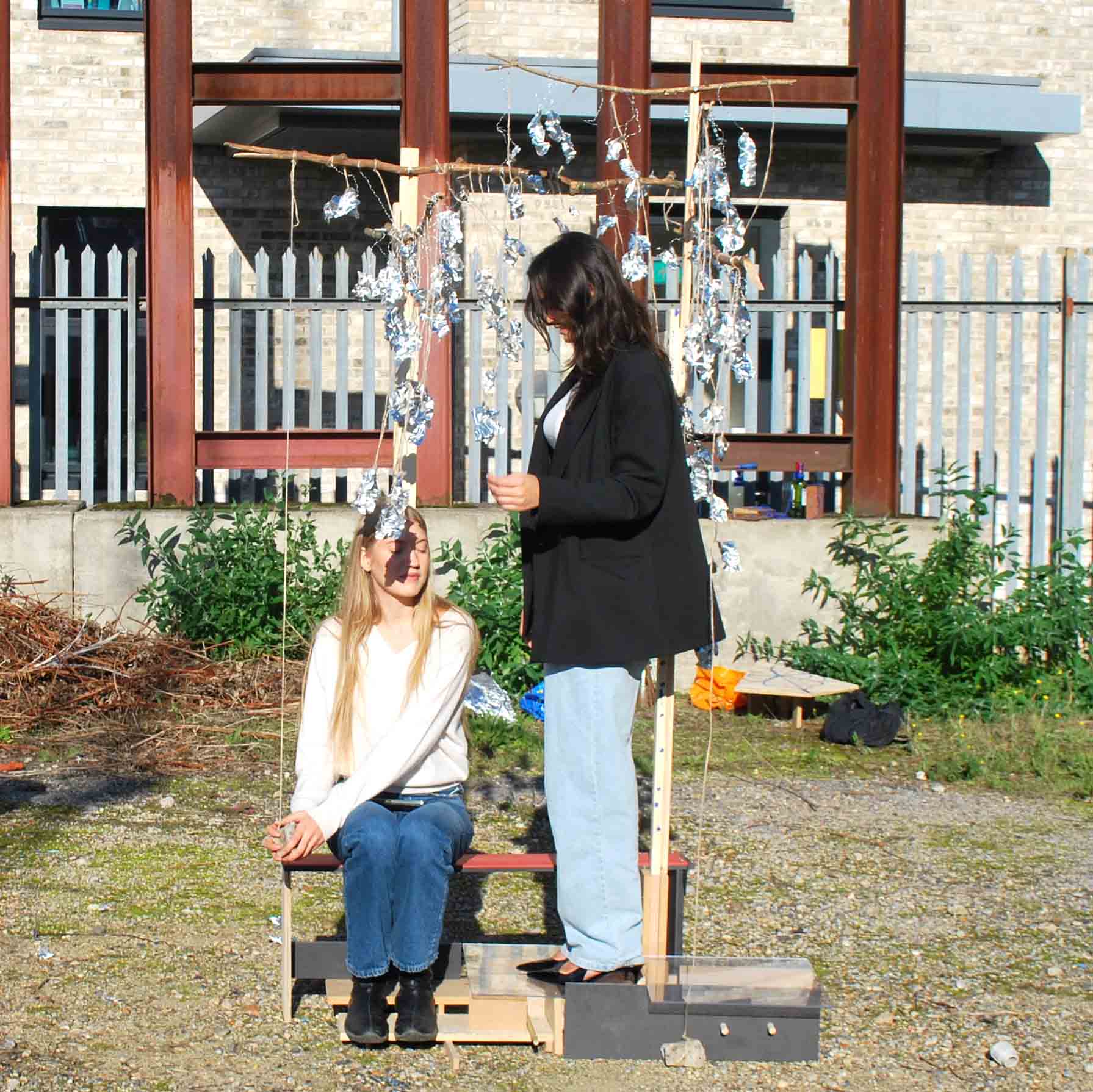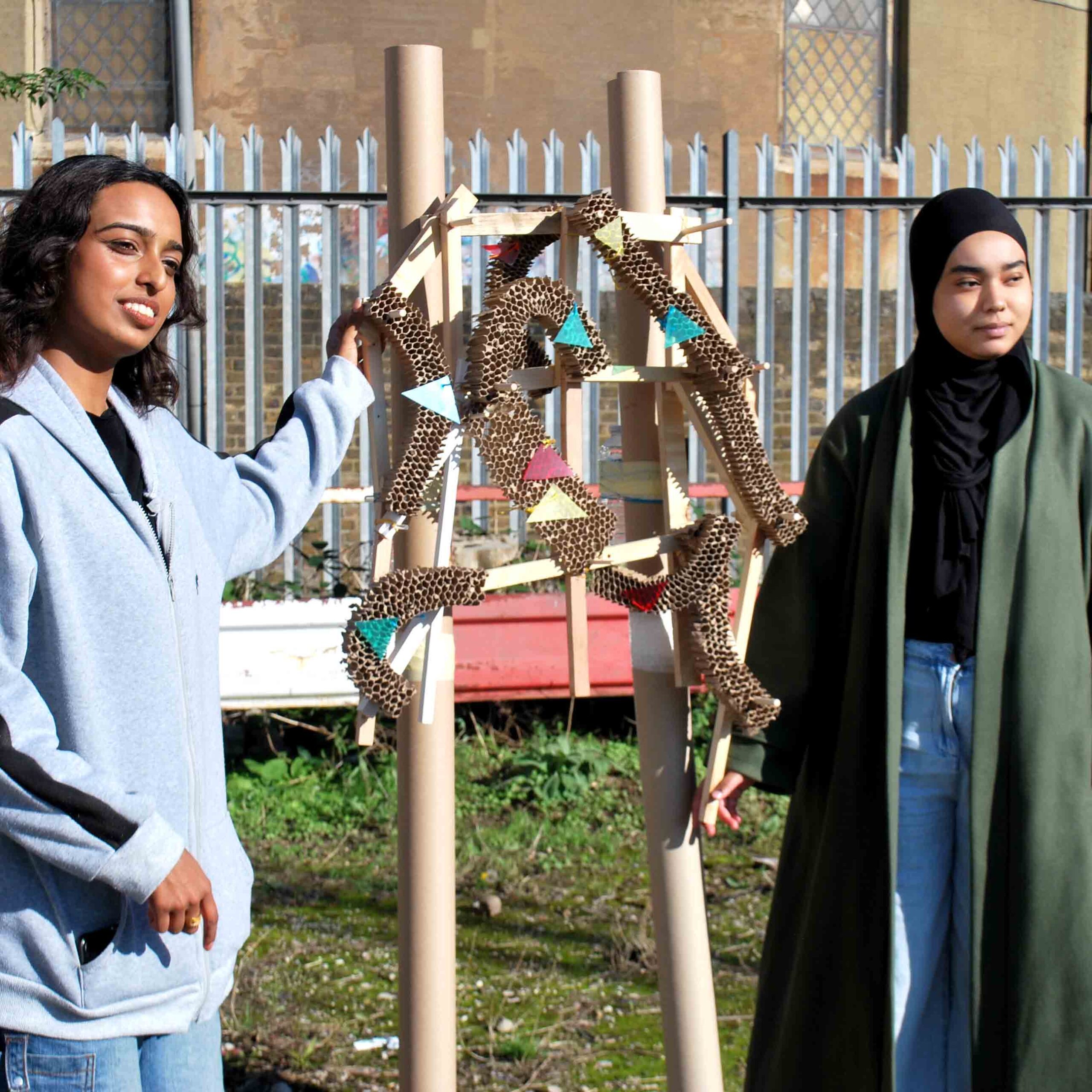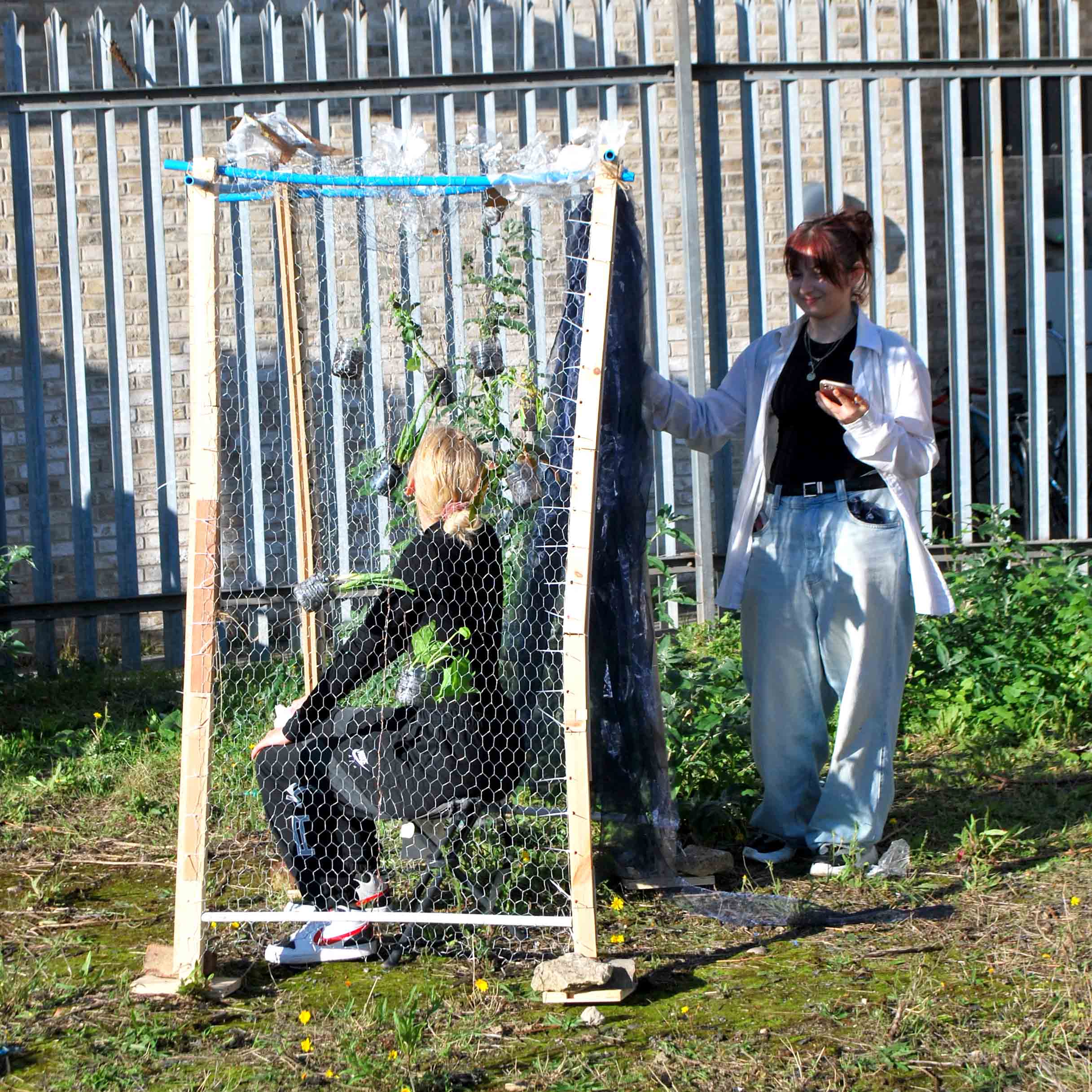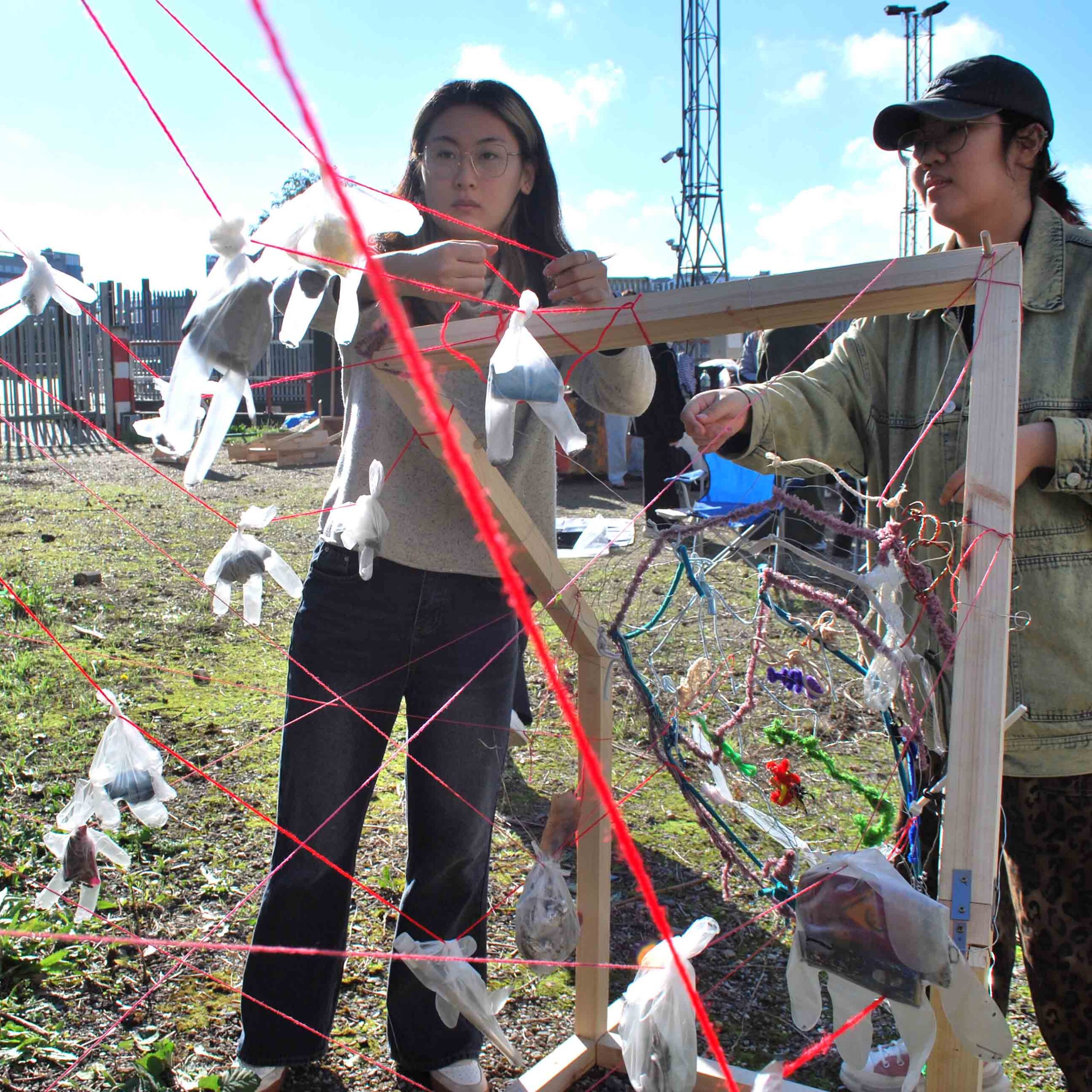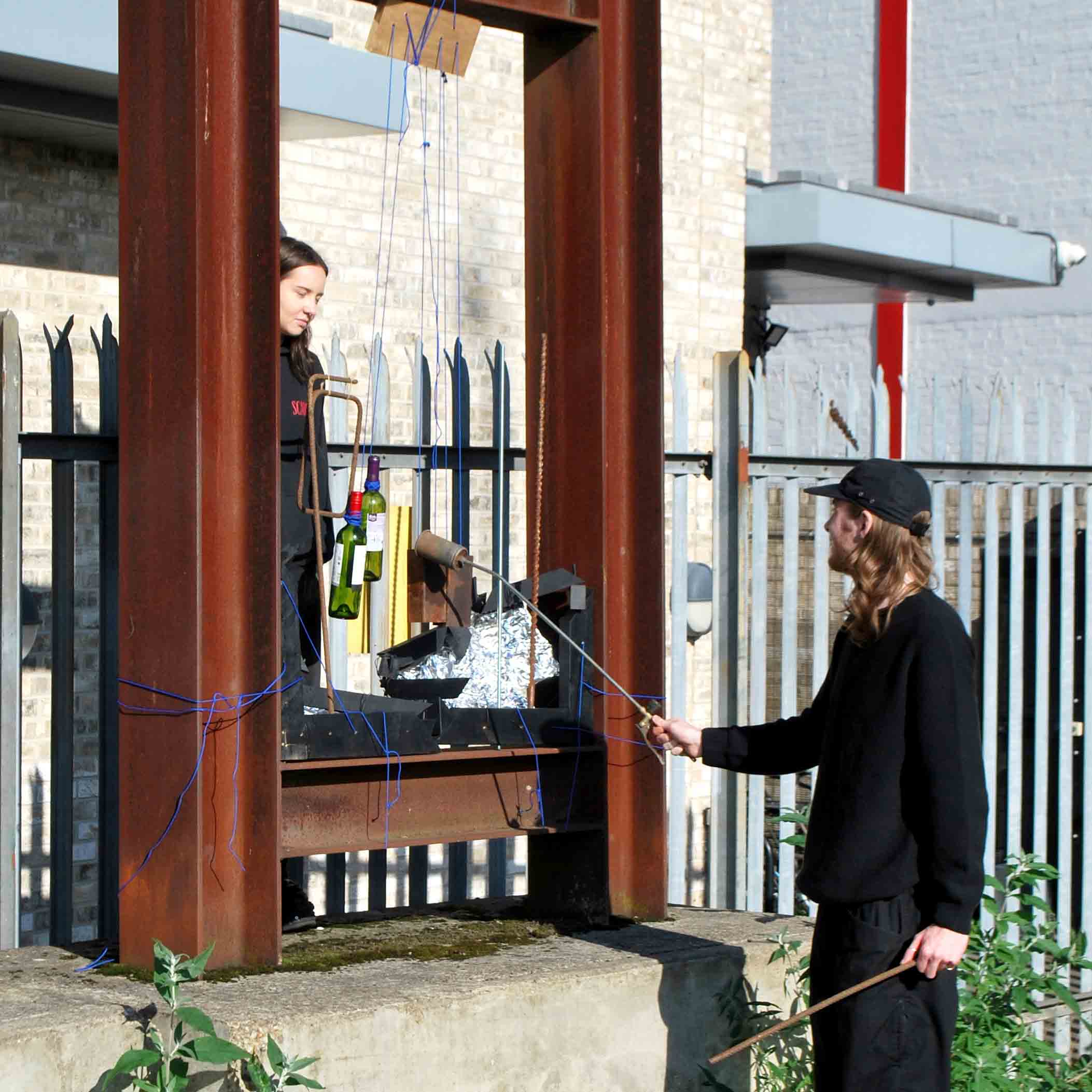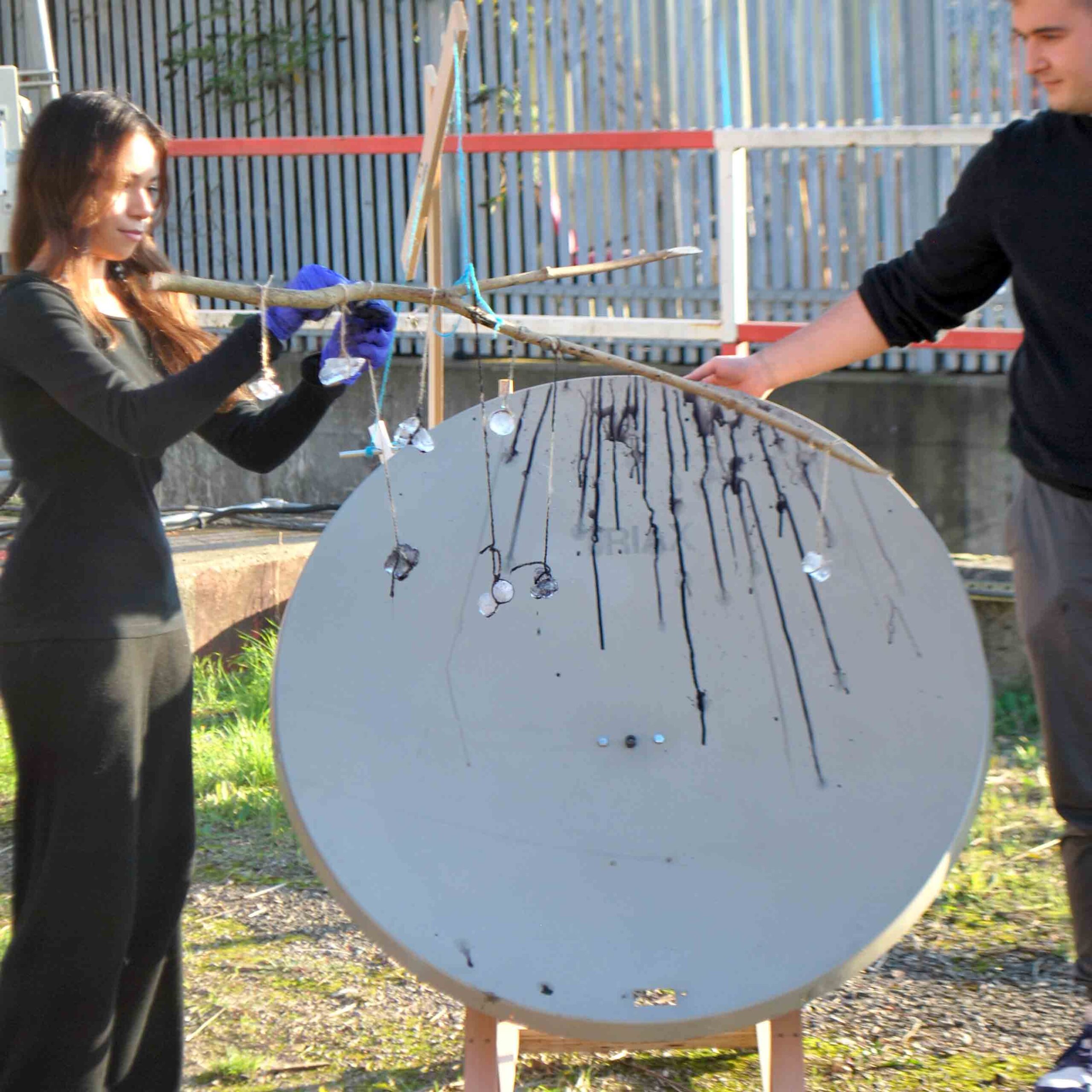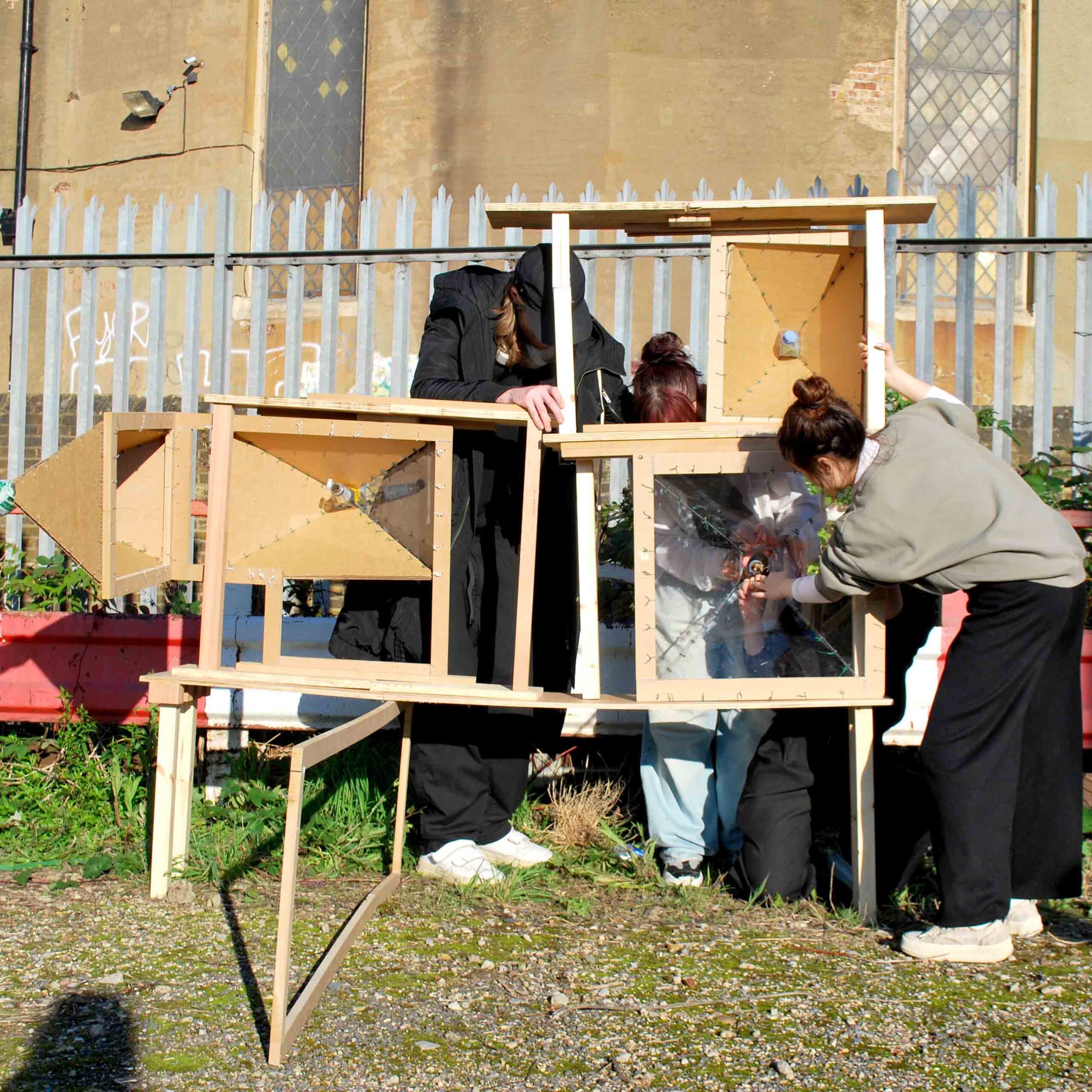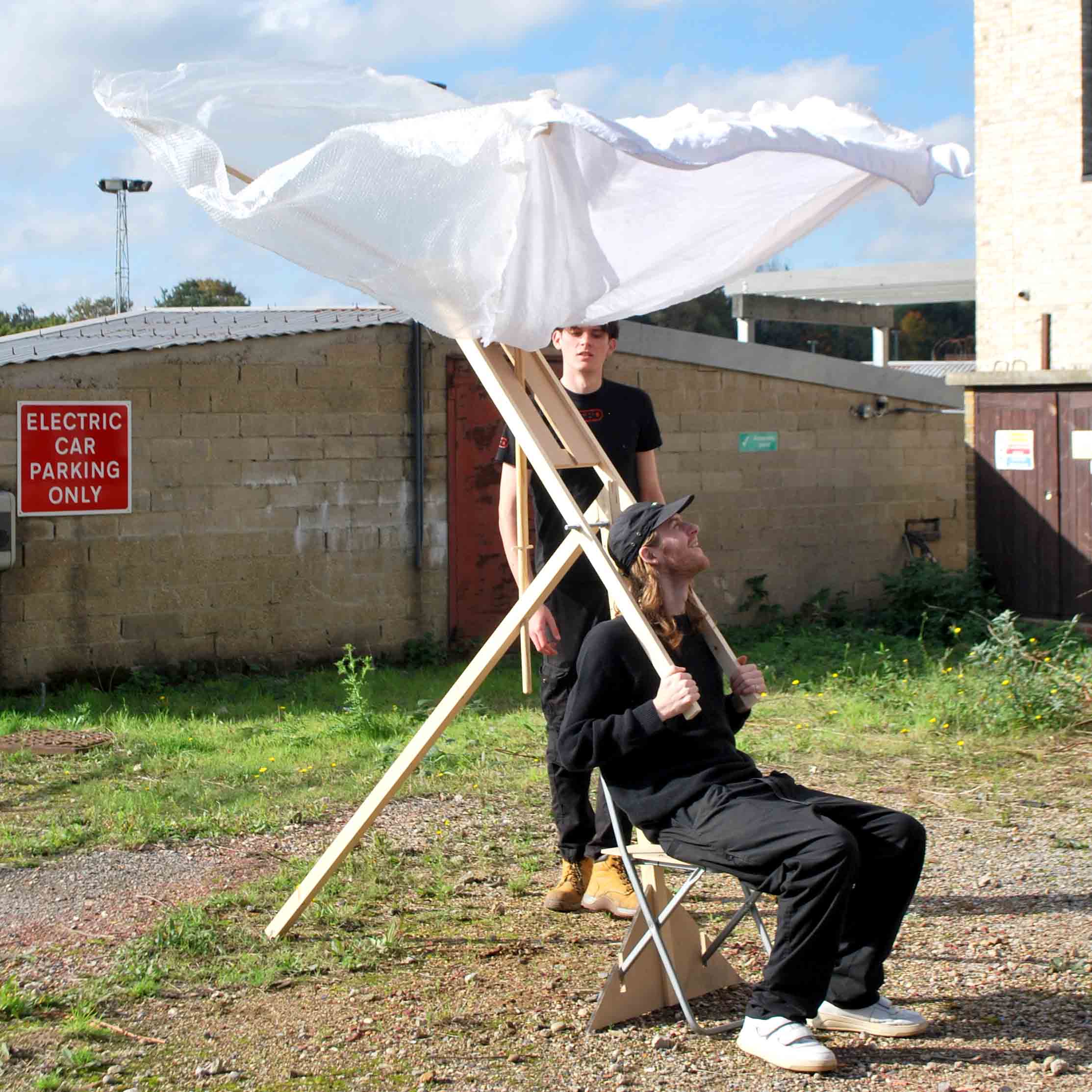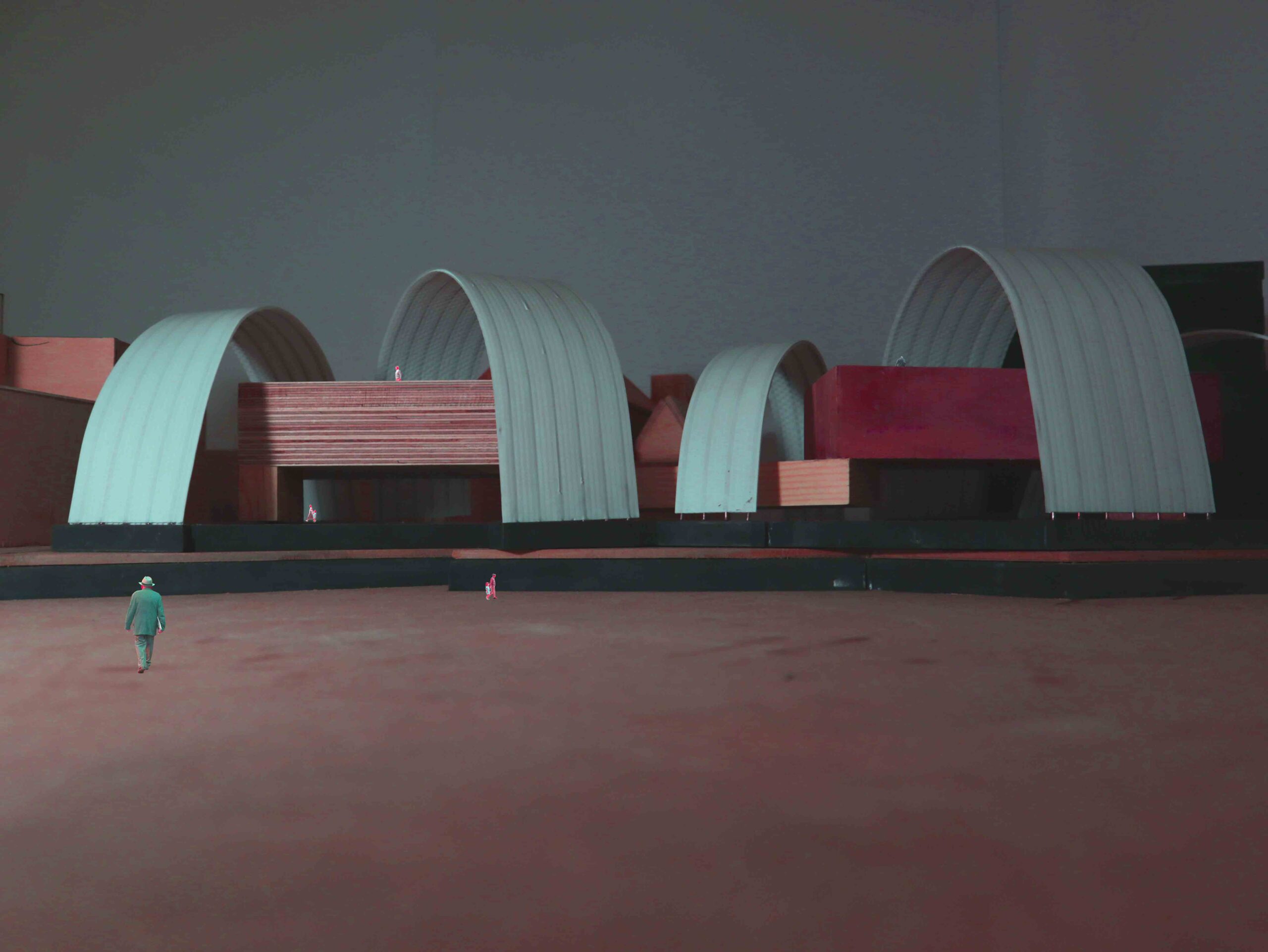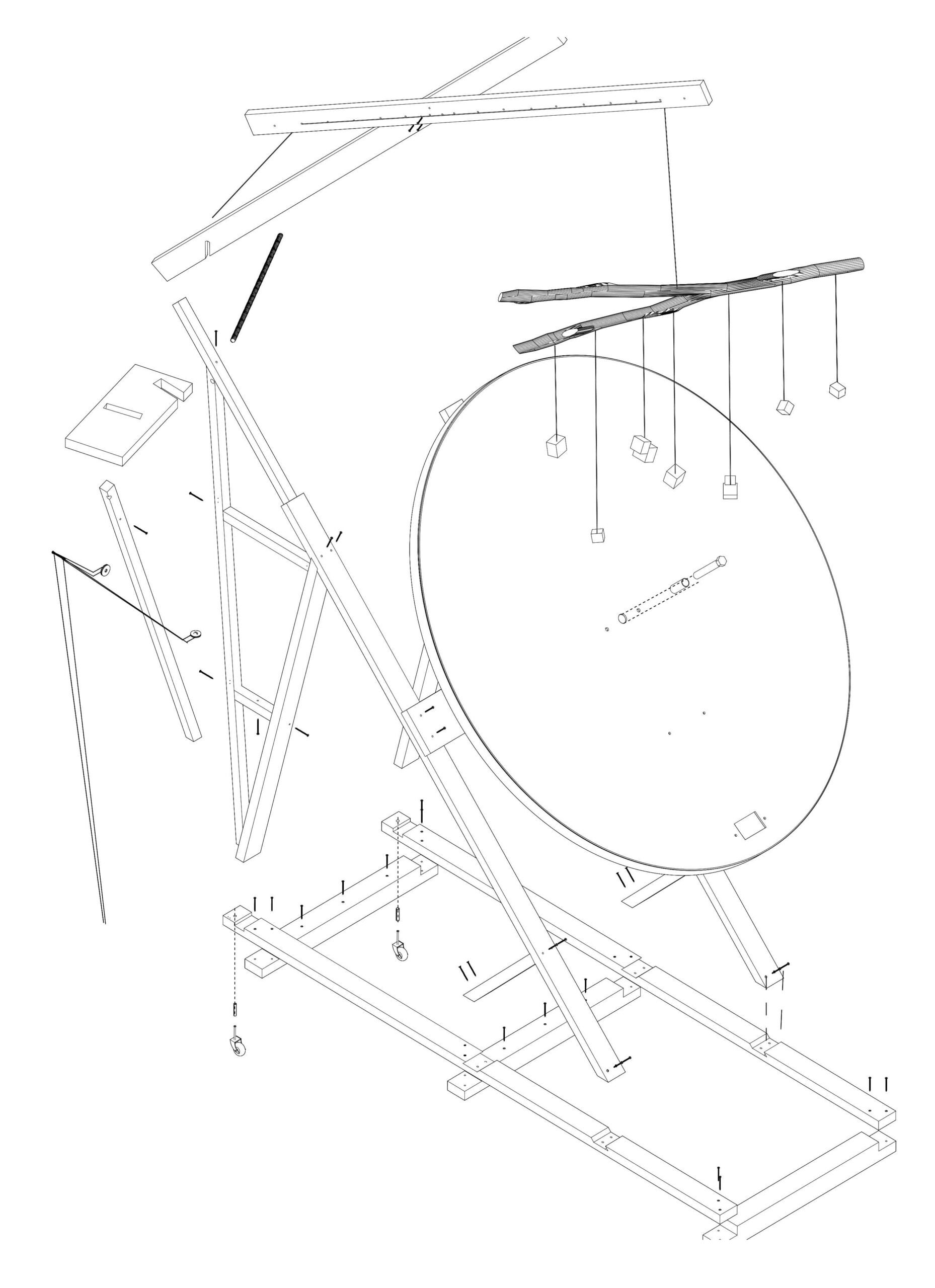Design Studio (Two) Four BA Architecture
Camilla Wilkinson & Balveer Mankia
Camilla Wilkinson is an architect and lecturer. She has worked in high profile practices in Germany and the UK. Camilla makes research and lectures on the 1914-18 war camouflage system Dazzle Painting.
Balveer Mankia is the founding director of BAL Architecture. Formerly a partner at MAKE, he has extensive experience in the design and delivery of several award-winning buildings across the UK. He has taught at the Universities of Greenwich and Nottingham.
DS(2)4: Camden Hinterland
Students: Maria-Alessandra Andrei, Taranvir Bansal, Sofiia Bernovska, Tianran Chen, Robert Finaru, Marcus Handley, Ty Mean Lim, Tharsatheepa Lohanathan, Salma Mazrui, Sabina Metaj, Viktoriia Mikheeva, Eunice (Ka Hei) Ng, Amna Ola, Sarah de Souza Ribeiro, Edward Rosson-Jones, Jake Wright, Ya You
Performance in architecture was our theme for exploration. erformance pertains to architectural programmes (staged events), constructions (structures and materials), experiences (human behaviours), environments (atmospheres and climates) and representation (verbal and visual presentation). The borough of Camden, carved up by infrastructure and post-industrial sites, has a council caught between powerful developers and powerful neighbours both intent on shaping the future of 15 acres of Camden’s highly valued hinterland, ‘Murphy’s Yard’. ur site for investigation was located on a split-level area behind the O2 Forum, Kentish Town. Through developing performative propositions, we explored possibilities for the public realm that integrated the Heath Line, a proposed pedestrian route linking Kentish Town to Hampstead Heath, into our architectural proposals.
Project 1 Climate Scenography
Students were asked to build inventive climate scenographies that engaged our senses, sensibilities and imagination through the construction of a 1:1 scale fragment using recycled or low carbon materials. They then transformed the fragment in a performance space to test their initial propositions for the site.
Project 2 Progressive Performance Space
Students designed a landmark structure that characterises the values of a performance company as client. We investigated how spaces designed for live performance can inform future regenerative or low carbon construction techniques.
Our studio approach is to the explore potential of our sites through preliminary exercises ranging in scale from a site wide design charette to large scale model making, exploring material tectonics. e discussed the notion of concepts in architecture whilst experiencing relevant performative spaces ranging from The
Brighton Waste House to The National Theatre. We have learned that qualities of time, materiality and space differentiate but are increasingly shared by theatre and architecture. Building visits contributed to our questions about performance and the opportunities regenerative architectures can offer a new low carbon era.
Guest Critics: Marcus Andren (SLAB), Khadija Begum (Marks Barfield Architects), Chris Bryant (Alma-nac), Josh Bulman (Haines Phillips Architects), Kate Cheyne, Albane Duvillier (HOUSE of Bricoleurs), Chris Leung, Hugh McEwen (Office S&M), Sofia Mezdagat (House of EM), Tadeas Riha, Urna Sodnomjamts, Nasios Varnavas, Paolo Zaide
Special thanks: Duncan Baker-Brown (University of Brighton), Martin Brazil (Murphy’s Yard), Alice Hardy (UCL/Global Generation), Niall Carter and Eleftherios Demoulias (P3)










